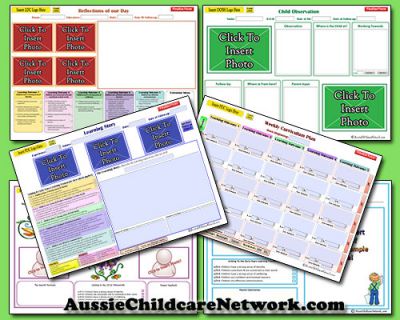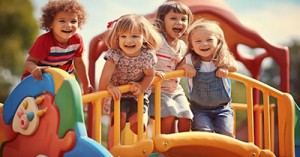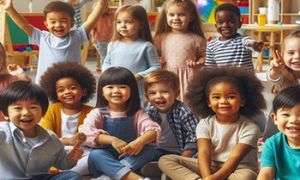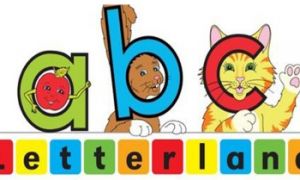Within Australia, Programming and Planning is reflected and supported by the Early Years Learning Framework. Educators within early childhood settings, use the EYLF to guide their decisions to interpret and assess children’s learning and development.
Please note: I understand that the information in this article needs to be updated to make it more relevant and up to date with the EYLF. This article was written back in 2009-11 when the EYLF had just begun. Now from what we have learnt there are different ways and approaches in documenting the EYLF. This article will be updated over the next few weeks or so. Also remember to check out our collection of EYLF Templates available in this site for LDC, FDC and OOSH settings in this link here: EYLF Templates
When programming and planning, documentation is essential and is needed as part of the ongoing cycle of planning, documenting and evaluating each child’s knowledge and skills. This article is to be used as a guide to understand how to program and plan using the EYLF.
What Is Programming and Planning
The planning side of programming involves using the information collected from various sources to write the curriculum plan. The experiences and activities listed on the curriculum plan, are intentional are intended to achieve a learning outcome based on the EYLF. This means all the experiences planned and which children are engaged in on a daily basis, have an outcome and are planned to be available on that specific day.
Each experience on the curriculum plan must have an objective (learning outcome), a reason why that experience is being provided and clearly states where the experience came from (input keys). This provides a clear link to the learning objective and to the original source or documentation of where this experience originated from.
As educators begin to plan and implement a curriculum plan, information needs to be gathered and interpreted of children skills, understandings, interests and strengths. This is an important part of the planning process, as it enables educators to make decisions on how to further extend upon each individual child’s skills, interests and knowledge to support them in their development and learning.
Documents Needed
In the EYLF it states “Educators use a variety of strategies to collect, document, organise, synthesise and interpret the information that they gather to assess children’s learning. They search for appropriate ways to collect rich and meaningful information that depicts children’s learning in context, describes their progress and identifies their strengths, skills and understandings.”
As part of the program and planning process documentation becomes a resource tool that is used to reflect on and extend upon children’s learning and development. The collection of documentation gathered should come from a wide variety of sources which include:
- Daily Diary / Reflections of Our Day
- Learning Stories
- Observations
- Portfolios
Through planning, once this information and evidence of learning is collected, the curriculum plan will begin to take shape. This is the process of “designing a curriculum” with children rather than “programming” for children’s learning. Below is a brief description on each of the documentation required for programming and planning:
Daily Diary/ Reflections of Our Day
The Daily Diary or Reflections of Our Day is used to evaluate the experiences, activities, spontaneous learning and events that happened within the early childhood setting. It is usually written at the end of each day and provides insight to parents and others of what went on during the day. The Daily Diary is also used as an evaluation tool to document whether the experiences planned achieved the desired goal (the learning outcome). This document is necessary as part of the overall documentation as it provides a link between daily experiences and the Curriculum Plan.
Learning Stories
A Learning Story is a format used to document a child’s learning. It uses “story telling” to describe a child’s learning process. There are many details that are incorporated into a learning story which describes: the experience that un-fold or an event, how the child interacts during the experience or with others, conversations, interests, skills etc. Basically it’s a narrative of recognizing and describing the learning that is taking place through a child’s play.
Observations
When observing a child, it involves watching and listening attentively to a child to learn more about them while they are engaged in an experience. There are a variety of techniques used when observing children, such as running records, anecdotal records, photo obs, checklists etc. and different types of observation methods should be used in order to interpret, assess and evaluate the information gathered. Through observations, educators gain insight into children’s thinking, understanding and skills.
Portfolios
Portfolios contain collected information and samples (artwork, photos, special moments, family input etc), which relates to each child's developmental and learning progress. As children view their portfolio it enables them to begin to evaluate their own efforts and for parents provide them with a snapshot of their child’s learning journey. Portfolios are used to celebrate children’s achievements, interests, skills and progress through a variety of samples.
The Curriculum Plan
The Early Years Learning Framework describes the curriculum as “all the interactions, experiences, activities, routines and events, planned and unplanned, that occur in an environment designed to foster children’s learning and development”.
The documentation collected as required, will be used as evidence and as a guide to make informed decisions to form the content of the curriculum plan. This is done by linking further learning opportunities from these documents to the curriculum plan. Collaborating with families, reflecting on play experiences, guiding children’s learning etc. is key to a successful child orientated curriculum plan. It’s a continuing process of collecting evidence and information, identifying the development of learning and reflecting upon our daily practices.
Once the documentation is analysed, extension experiences, interests, supported skills, family input etc, are then written onto the curriculum plan. The Early Years Learning Framework is used as a tool to assist educators to collaborate with children and families in order to achieve the best learning outcomes for children. The learning outcomes are used to assess curriculum decision making.
NQS – Quality Area 1: Educational Program and Practice
This quality area of the National Quality Standard focuses on an educational program and practice that engages, stimulates and enhances children’s learning and development.
Planning increase the value of children’s time in education and care by ensuring the educational program and practice responds to children’s interests and scaffolds their learning. Planning is also important in ensuring accountability to families and children, management, funding and regulatory bodies.
Planning, assessment and evaluation are ongoing processes that underpin the educational program and involve educators in thinking about what is offered and why. Planning involves observing, gathering and interpreting information about children to inform the preparation of environments and experiences that engage and are meaningful for them. It also involves providing families with many genuine opportunities to contribute to the development of educational goals and priorities for their child. Reflecting on and documenting children’s experiences and learning forms the basis of future planning.
Element 1.2.3: Each child’s learning and development is assessed as part of an ongoing cycle of planning, documenting and evaluating children’s learning.
Assessment of children’s learning refers to the process of gathering and analysing information as evidence about what children know, can do and understand. It is part of a cycle that includes planning, documenting and evaluating children’s learning. Examples of every day practice include:
- educators within the service using the Early Years Learning Framework together with their knowledge of the children’s current learning and development, to implement and reflect on programming
- educators observing and recording children’s learning and behaviour to inform their educational planning
- using written plans as the basis for evaluating the program
- documentation is gathered in a variety of ways
- analyse the information that is gathered about individuals and groups of
- evidence that children’s ideas and points of view are heard and respected in planning for and assessing learning experiences
- evidence that written programming and evaluation is ongoing and is inclusive of each child, including those who attend on a part-time or casual basis
Element 1.2.4: Critical reflection and evaluation of children’s learning and development, both as individuals and in groups, is used as a primary source of information for planning and to improve the effectiveness of the program and teaching strategies.
A lively culture of professional enquiry is established when educators and those with whom they work are all involved in an ongoing cycle of review through which current practices are examined, outcomes reviewed and new ideas generated. Examples of everyday practices include:
- educators using a variety of methods such as diary jottings, children’s comments and conversations, photographs and examples of children’s work to assist their reflection on children’s experiences, thinking and learning
- educators considering ways in which children’s interests and ideas can be scaffolded to enhance their learning and development
- comments about the effectiveness of the program are recorded and considered as part of the evaluation process
- documentation such as photographs, samples of children’s work and their words being used to create records
Program and Planning is a necessity that enhances the accountability and professionalism of the service. Documenting children’s experiences, learning and development makes children’s learning visible to children, educators and families and promotes shared learning and collaboration.







 Here is the list of the EYLF Learning Outcomes that you can use as a guide or reference for your documentation and planning. The EYLF
Here is the list of the EYLF Learning Outcomes that you can use as a guide or reference for your documentation and planning. The EYLF The EYLF is a guide which consists of Principles, Practices and 5 main Learning Outcomes along with each of their sub outcomes, based on identity,
The EYLF is a guide which consists of Principles, Practices and 5 main Learning Outcomes along with each of their sub outcomes, based on identity, This is a guide on How to Write a Learning Story. It provides information on What Is A Learning Story, Writing A Learning Story, Sample
This is a guide on How to Write a Learning Story. It provides information on What Is A Learning Story, Writing A Learning Story, Sample One of the most important types of documentation methods that educators needs to be familiar with are “observations”. Observations are crucial for all early childhood
One of the most important types of documentation methods that educators needs to be familiar with are “observations”. Observations are crucial for all early childhood To support children achieve learning outcomes from the EYLF Framework, the following list gives educators examples of how to promote children's learning in each individual
To support children achieve learning outcomes from the EYLF Framework, the following list gives educators examples of how to promote children's learning in each individual Reflective practice is learning from everyday situations and issues and concerns that arise which form part of our daily routine while working in an early
Reflective practice is learning from everyday situations and issues and concerns that arise which form part of our daily routine while working in an early Within Australia, Programming and Planning is reflected and supported by the Early Years Learning Framework. Educators within early childhood settings, use the EYLF to guide
Within Australia, Programming and Planning is reflected and supported by the Early Years Learning Framework. Educators within early childhood settings, use the EYLF to guide When observing children, it's important that we use a range of different observation methods from running records, learning stories to photographs and work samples. Using
When observing children, it's important that we use a range of different observation methods from running records, learning stories to photographs and work samples. Using This is a guide for educators on what to observe under each sub learning outcome from the EYLF Framework, when a child is engaged in
This is a guide for educators on what to observe under each sub learning outcome from the EYLF Framework, when a child is engaged in The Early Years Learning Framework describes the curriculum as “all the interactions, experiences, activities, routines and events, planned and unplanned, that occur in an environment
The Early Years Learning Framework describes the curriculum as “all the interactions, experiences, activities, routines and events, planned and unplanned, that occur in an environment


